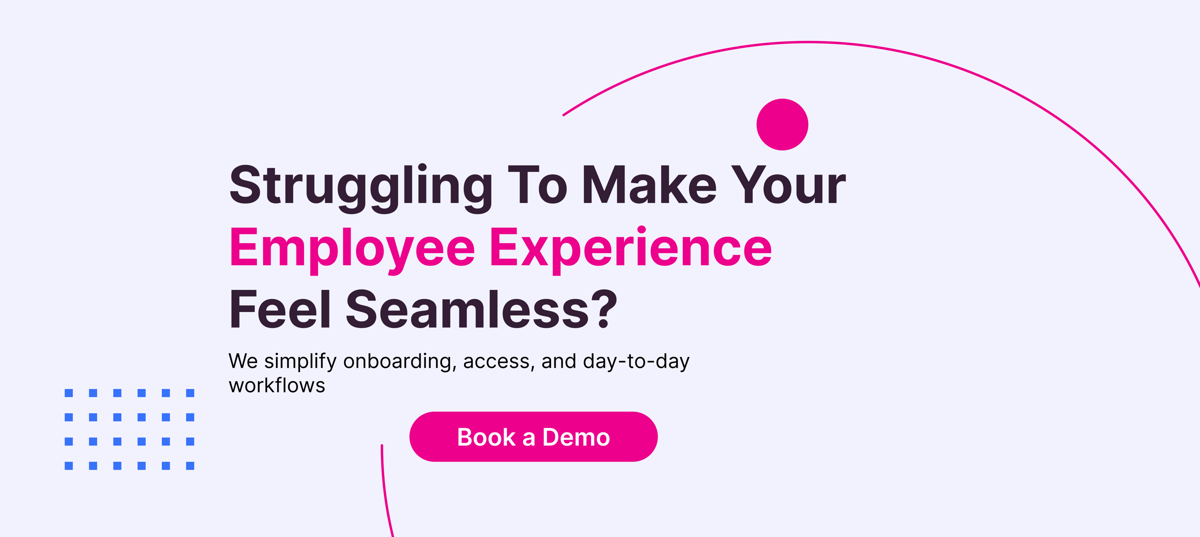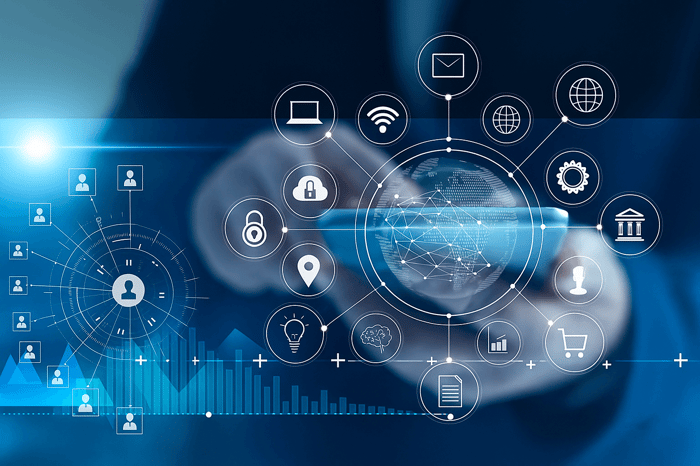Table of Contents
It’s easy to say you care about Improve employee experience. It’s harder to actually build one that works, without relying on surface-level perks or another round of motivational posters.
The real impact shows up in the tools, the trust, and how seamless (or not) the day-to-day feels.
We’ll break down practical ways to make employee experience better – things you can use, not just talk about.
Key Notes
Flexible work models boost retention by addressing diverse employee needs beyond traditional arrangements.
Data-driven personalization creates tailored experiences that significantly increase engagement and satisfaction.
Leadership development programs directly impact employee loyalty when focused on practical skills.
Strategic experience design yields measurable ROI through reduced turnover and improved productivity metrics.
Flexibility
Flexibility has emerged as a non-negotiable element of the modern workplace.
A Gartner survey found that 43% of workers cite flexibility as a key factor in their productivity, while 59% would consider leaving their job for one offering more flexible arrangements.
Implementing Choice-Based Work Environments
Forward-thinking organizations are moving beyond rigid policies toward choice-based models that empower employees to work when and where they perform best:
Asynchronous collaboration frameworks: Companies like GitLab and Automattic have built entirely distributed teams that collaborate across time zones using clear documentation and communication protocols.
Results-oriented work environments: Organizations like Netflix focus on outcomes rather than hours worked, giving employees autonomy over how they accomplish objectives.
Flexible scheduling options: Companies like Dell offer compressed workweeks, job sharing, and flexible hours to accommodate diverse lifestyles and personal responsibilities.
Implementation Tip: Start with a pilot program in one department to test flexible arrangements before rolling out company-wide policies. Collect data on productivity, satisfaction, and collaboration to refine your approach.
Technology's Role in Enabling Flexibility
The right digital tools make flexible work not just possible but highly effective:
Collaboration platforms: Tools like Microsoft Teams, Slack, and Asana facilitate seamless communication and project management across locations.
Cloud-based document management: Solutions like Google Workspace and Microsoft 365 enable real-time collaboration on shared documents.
Virtual meeting technologies: Advanced video conferencing tools with features like breakout rooms, whiteboards, and transcription services support effective remote meetings.
Leadership Development
Managers account for at least 70% of the variance in employee engagement scores, according to Gallup research. Investing in leadership development directly impacts employee experience.
The 'Sous Chef' Approach to Management
Effective modern leaders function like sous chefs – providing resources, removing obstacles, and supporting their teams without micromanaging:
Capability building: Microsoft's manager development program focuses on coaching skills and emotional intelligence alongside technical knowledge.
Psychological safety: Google's Project Aristotle found that psychological safety was the most important factor in high-performing teams. Their manager training emphasizes creating environments where employees feel safe to take risks.
Feedback Mechanisms for Continuous Improvement
Regular feedback loops strengthen leadership capabilities:
360-degree feedback: Salesforce implements quarterly 360-degree reviews for managers, incorporating perspectives from direct reports, peers, and leadership.
Pulse surveys: Companies like LinkedIn use frequent, short surveys to gauge team sentiment and identify leadership improvement opportunities.
Skip-level meetings: Organizations like Hubspot facilitate regular meetings between employees and their manager's manager to gather unfiltered feedback on leadership effectiveness.
Recognition and Rewards
Recognition programs yield a 31% lower voluntary turnover rate compared to organizations with ineffective or no recognition strategies.
Effective recognition programs share key characteristics:
Timeliness: Recognition delivered promptly after the achievement maximizes impact.
Specificity: Acknowledging specific behaviors reinforces desired actions.
Visibility: Public recognition amplifies impact and sets cultural expectations.
Alignment with values: Recognition tied to company values strengthens cultural identity.
Non-Monetary Rewards and Their Benefits
While financial incentives matter, non-monetary recognition often creates more lasting impact:
Peer recognition platforms: Cisco's Connected Recognition program enables employees to recognize colleagues with points redeemable for merchandise, gift cards, or charitable donations.
Experience rewards: Airbnb offers travel credits as recognition rewards, aligning incentives with their company mission.
Development opportunities: Adobe provides high-performers with special project assignments, conference attendance, or learning stipends as recognition.
Leveraging Technology
Strategic technology implementation reduces friction points and personalizes the employee journey.
AI-Powered Personalization
Artificial intelligence tailors experiences to individual needs:
Personalized learning: IBM's Your Learning platform uses AI to recommend personalized development content based on career goals, skills gaps, and learning preferences.
Intelligent career pathing: Workday's Career Hub uses machine learning to suggest potential career moves based on skills, interests, and organizational needs.
Customized benefits selection: Walmart uses AI to help employees navigate benefits options based on their specific life circumstances and usage patterns.
Data-Driven Decision Making
Analytics identifies experience gaps and measures improvement:
Sentiment analysis: Companies like Unilever analyze communication patterns and survey responses to identify early warning signs of burnout or disengagement.
Predictive attrition models: JP Morgan Chase uses predictive analytics to identify flight risks and implement targeted retention strategies.
Experience benchmarking: Microsoft's daily employee experience pulse surveys provide real-time data for comparing teams and identifying best practices.
Workplace Enablement Platforms
While personalization and analytics shape the front end of the employee journey, foundational tech infrastructure is what keeps everything running smoothly behind the scenes.
Platforms that manage onboarding, remote access, and internal tool adoption play a critical role in reducing friction, improving time-to-productivity, and supporting hybrid work.
Common capabilities include:
Mobile device enrollment that simplifies Day 1 setup and reduces IT support burden
Secure remote access hubs for seamless, high-performance connectivity
Internal pilot testing tools that enable smoother rollouts of new tech and processes
Self-service IT portals that empower employees while keeping help desk volume down
These systems might not be flashy, but they’re often the difference between a workplace that “just works” and one that’s a daily grind of tickets, delays, and frustration.
Holistic Wellbeing Programs
Progressive organizations treat wellbeing as a strategic priority rather than just a benefits checkbox.
🧠 Mental Health Resources and Support
| Strategy | Description | Example |
|---|---|---|
| On-demand counseling | Free access to mental health professionals via digital platforms. | EY offers on-demand mental health sessions. |
| Manager mental health training | Training for managers to identify mental health issues and provide support. | Starbucks trains managers on mental health. |
| Stress reduction programs | Mindfulness and stress reduction initiatives. Program has been completed by thousands of employees, with 93% reporting that they would recommend the program. | Google's Search Inside Yourselfprogram. |
🏃♂️ Physical and Financial Wellbeing
| Strategy | Description | Example |
|---|---|---|
| Personalized health coaching | Wellness plans developed with personal health coaches. | Johnson & Johnson provides health coaching. |
| Financial education | Financial planning tools, workshops, and assessments. | Prudential offers financial wellness programs. |
| Social connection initiatives | Structured virtual activities to foster remote social interaction. | Zappos runs virtual coffee chats and group events. |
🧩 Implementation Frameworks for Sustainable Change
Employee Journey Mapping
| Step | Action |
|---|---|
| Identify key moments | Map critical touchpoints from recruitment to offboarding. |
| Gather feedback | Collect employee input at each stage. |
| Analyze pain points | Detect friction that harms the experience. |
| Design interventions | Build targeted solutions for high-impact areas. |
| Implement and measure | Deploy improvements and measure effectiveness. |
The Listen-Act-Measure Cycle
| Phase | Action |
|---|---|
| Listen | Collect feedback (surveys, focus groups, analytics). |
| Act | Implement improvements based on insights. |
| Measure | Track impact via engagement, productivity, and retention metrics. |
| Communicate | Share results and next steps with employees. |
| Repeat | Continue the cycle for ongoing improvement. |
Small Business Applications
| Focus Area | Action |
|---|---|
| Prioritization | Focus on high-impact areas like onboarding, feedback, and recognition. |
| Affordable technology | Use low-cost, cloud-based tools for process management and feedback. |
| Community partnerships | Collaborate with local orgs for wellness resources and development. |

FAQs
How long does it typically take to see measurable results after implementing flexible work models?
Most organizations see initial impacts within 3-6 months, with comprehensive results becoming evident after 9-12 months of consistent implementation and refinement.
What are the potential downsides of personalization strategies, and how can they be mitigated?
Excessive personalization can create operational complexities and privacy concerns. Mitigate these by establishing clear data governance policies, maintaining transparency about data usage, and balancing personalization with standardized practices.
How can smaller organizations with limited resources effectively implement leadership development programs?
Focus on peer mentoring, leverage free or low-cost online learning resources, implement job rotation opportunities, and create internal communities of practice that foster knowledge sharing without significant financial investment.
What metrics beyond retention rates should companies track to evaluate the success of their employee experience initiatives?
Track productivity indicators, internal mobility rates, quality of referral candidates, employee Net Promoter Scores (eNPS), absenteeism trends, and participation rates in optional company programs or initiatives.
Conclusion
Employee experience isn't a single program. It’s the sum of every moment, from onboarding and recognition to tech access and leadership support.
The companies getting it right are investing in real systems that remove friction, build trust, and make daily work feel smoother, faster, and more purposeful. That includes how people access tools, how fast they ramp up, and how supported they feel doing it.
If you're working on removing blockers in your digital workplace – whether it's onboarding, remote access, or internal tool adoption – we can help. Book a demo and we’ll show you what that could look like for your team.





